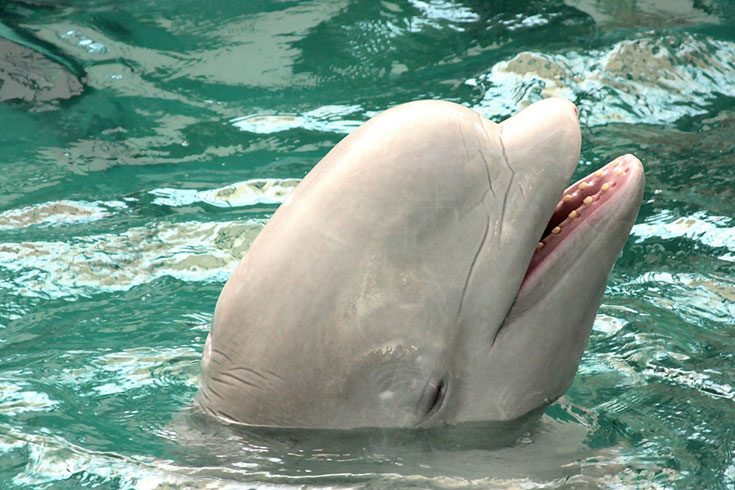A wild dolphin named Kylie may be able to “converse” with porpoises, a striking example of cross-species communication.

Image credit: kenichi nobusue
The Firth of Clyde on the west coast of Scotland is a large saltwater inlet that is home to thousands of harbor porpoises – and one odd dolphin named Kylie. On clear days, visitors to Clyde’s marina can sometimes see Kylie swimming together with the harbor porpoises (Phocoena phocoena) living there. Fellow cetaceans that are about two-thirds her size.
For the past 14 years, Kylie hasn’t been observed in the company of other common dolphins (Delphinus delphis). But that doesn’t mean she’s been all alone during all that time.
Findings from new research published in Bioacoustics this January, Kylie has much closer ties with the local porpoise population than scientists would have expected. For one thing, while “by default”, the vocal repertoire of common dolphins includes a diverse range of clicks, whistles, and pulse calls, Kylie doesn’t whistle at all. Instead, she “talks” to her harbor porpoise neighbors like they do – using high-pitched bursts of clicks.
After 14 years away from her species (the common dolphin, Delphinus delphis), Kylie has spent so much time around porpoises that eventually she even started to sound like them. Her vocalizations include high-pitched click bursts associated with porpoises instead of the whistles and pulse calls more commonly seen in dolphins. Indeed, Kylie has been seen chatting with her adopted family of harbor porpoises in their “language”, representing a remarkable world-first in cross-species communication.

The common dolphin (Delphinus delphis). Image credit: AlexandreRoux01
When scientist learnt about ho close Kylie is related to the resident harbor porpoises, they decided to review some older recordings taken of her in 2016 and 2017 using a hydrophone to analyze her acoustic behavior. Basically, they wanted to compare the noises made by Kylie when she was swimming alone versus when hanging out with porpoises.
While porpoises communicate with high-frequency, narrow-band clicks, dolphins tend to swim around whistling – a sound a porpoise would never make.
When the scientists reviewed the recordings, they immediately realized that Kylie “definitely identifies as a porpoise,” as she could be heard using sounds that resembled the clicks associated with porpoises even when alone, and not whistling like other dolphins, according to National Geographic report co-author on the paper David Nairn, who studies porpoises in the area.
The researchers also established that the communication between the dolphin and the porpoises had a rhythm indicative of a conversation, though exactly how much information is portrayed in these chats is unclear.

Porpoise vs dolphin. Similar, still different. For example, dolphins have more elongated “beaks” than porpoises. Image credit: Jan Zoetekouw (top); Gervasio S. _ Eureka_89 (bottom)/Shutterstock.com
Scientists have no idea why exactly Kylie was separated from her own pod – it could have been injury, illness, or even adverse weather, all of which have been linked to cetaceans being isolated. Whatever happened, this little dolphin apparently chose, instead of her dolphin pals, interaction with local porpoises, eventually taking over their vocalization characteristics.
It hasn’t happened for the first time. Other cetaceans like captive killer whales, for example, have been observed picking up the vocalizations of bottlenose dolphins when the two species were socialized.
Other ocean mammals have also demonstrated the inclusivity of pods, like these beluga whales adopting a lost narwhal.
Who knows? One day we might as well be talking to these guys.
.

.
/cdn.vox-cdn.com/uploads/chorus_asset/file/15904941/shutterstock_89989561.0.1473875587.jpg)
.
.





